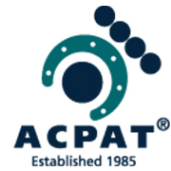Physiotherapy
CORNWALL UK
What Is Physiotherapy
Physiotherapy is the restoration of 'normal movement' whether it be human or animal. Optimum movement patterns are key to successfully achieving goals, no matter how big or small, and allows maximum comfort in the process. Physiotherapy is designed to assess and locate these movement dysfunctions taking into account the whole body.
Chartered Physiotherapists have trained extensively in anatomy biomechanics, physiology and more recently in pain science. With the addition of pain science Physiotherapists are now able to identify a wider range of potential contributors to pain a patient may experience. This is important as both pain and adapted movement patterns are regulated by the brain. When pain is resolved, normal movement patterns do not necessarily reactivate automatically which can result in pain that persists or reoccurs. In addition, research on pain science has resulted in a shift in treatment from being single-mindedly focussed on eliminating pain in certain chronic conditions to valuing the broader goal of restoring patients to the life roles that are meaningful to them which in turn leads to a better quality of life.
This is why ACPAT Chartered Physiotherapists work holistically with each individual and work with all members of the team including vets, farriers, saddlers and trainers. Physiotherapy can then use a whole range of treatment techniques and not just one or two. This multi-disciplinary, holistic, multi-modal approach is key to achieving the best for you and your animal.
Benefits of Physiotherapy
Improved Performance
Optimised Healing Times
Improved Strength and Movement.
Joint and Soft Tissue Care
Improved Quality of Life
Pain Relief
Indications for Physiotherapy
Wound Management
Management of Osteoarthritis
Recovery from Surgery or Injury
Maintain Athletic Function
Maintain Comfort in Later Life
Prevent Health Problems in Later Life
Neurological Disorders
Pulmonary Disorders
Training
The longest and most intensive route is to become a Veterinary Physiotherapist is to first become a 'Human' Physiotherapist by completing a 3 year BSc degree in Physiotherapy and then joining the CSP. This gives the status 'Chartered Physiotherapist' which is a protected title. From here to become an ACPAT Physiotherapist you are required to complete a 2/3 year Post Graduate Diploma / MSc in Veterinary Physiotherapy which will give membership to The Assocciation of Chartered Physiotherapists in Animal Therapy (ACPAT).
This makes ACPAT Physiotherapists the only ones qualified to treat horses, dogs and humans.
ACPAT Physiotherapists can assess and treat a wide range of conditions involving ALL aspects of human equine and canine life.
The Legal Bit
When used on its own in human medicine the term 'Physiotherapist' is a protected title. Unfortunately in Veterinary medicine where pre-fixed to express the treatment of a animal the title is no longer protected. This means anyone can use the term Veterinary Physiotherapist or Animal Physiotherapist without attaining any qualifications at all.
ACPAT Physiotherapists aim to lead the field by raising standards in animal Physiotherapy and Rehabilitation by promoting excellence through ongoing education and research and supporting cohesion and development between Veterinary Medicine and Veterinary rehabilitation as is standard practice in the Human field.
At no point do we attempt to take the place of your vet. We work alongside your vet to provide a high quality service for your horse or dog. We work within guidelines of the Veterinary Act Exemptions Order (2015) , which states the treatment of an animal by 'Physiotherapy' is only allowed following a veterinary referral or consent from a Veterinary Surgeon. Under this act 'Physiotherapy' is interpreted to include all kinds of manual and manipulative therapy and therefore includes massage, osteopathy and chiropractic. Anyone treating your animal without such referral or consent is working illegally and without insurance.
